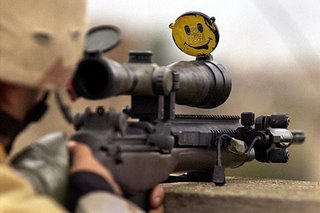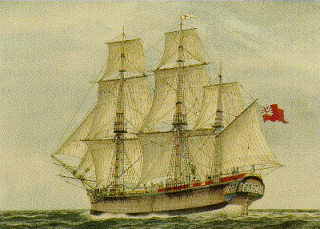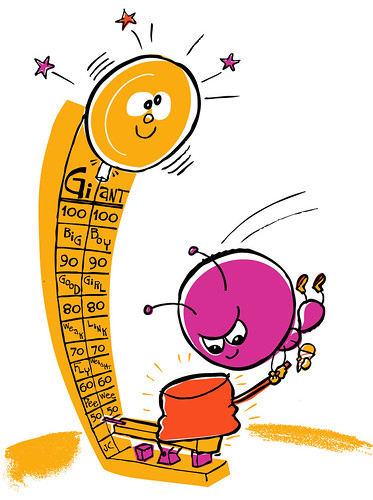
http://www.papertoilet.com/
It ends just like in real life.
Hat Tip: Linky and Dinky



Hat Tip: About.comI like peanut butter,The Marathons (1961)
creamy peanut butter,
chunky peanut butter too.


A Historical Curiosity
For your consideration and debate:
US Civil War: first time there is a Republican President - very large, Democratic anti-war movement.
Spanish/American War: Republican President - very large, Democratic anti-war movement.
World War One: Democratic President - no anti-war movement.
World War Two: Democratic President - no anti-war movement.
Korean War: Democratic President - no anti-war movement.
Vietnam War: As soon as a Republican took over the botched war from the Democrats - very large, Democratic anti-war movement.
Last Ten Years of the Cold War: Republican President - very large, Democratic anti-war movement.
Gulf War: Republican President - very large, Democratic anti-war movement.
Kosovo War: Democratic President - no anti-war movement.
War on Terrorism: Republican President - very large, Democratic anti-war movement.
Discuss: What are we to make of this clear pattern of Democrats opposing any war they are not in charge of?
Hat Tip: Blogs for Bush
Update: My comment
Rather than try to establish some hard and fast "rule", it is easier say that there is a trend.
Whenever the United States is involved in a military conflict for any length of time, the American people will hand the war to the Republicans to manage.
When they grow tired of that war, or the Democrats sense that more than the "usual gang of idiots" oppose the war, you can pretty much count on the Democrats to advocate for its end, regardless of the consequences for the affected locals, the participating soldiers, or future American foreign policy.
Is that better?
KODAK: Taken On The Road-American Mile Markers
Take an interactive drive across the

Join Matt Frondorf as he drives from the Statue of Liberty to the


This is Fulla, the Hijab-clad Arab Muslim adaptation of the decadent West?s Barbie doll.
Our Barbie wears the Hijab (head scarf) and Islamic attire - a long dress with long sleeves. While she is a blessing to many parents in the Muslim world who are happy to see their children playing with a doll which conforms to social traditions and religious obligations
Fulla is an Arab doll, developed a few years ago as an adaptation from the famous Barbie doll. It is only natural that she appears Arab or more specifically Gulf Arab, wearing the attire people in this part of the world are used to. Its manufacturers made sure that she wears the head scarf and its accompanying cloak without a veil, which covers the face. But Tunisia (and you don't know what Tunisia is), is conducting a clampdown and confiscating the doll and all other items which have Fulla's image (such are stationery and school bags) on the grounds that the clothes she is wearing spread sectarianism. One of the journalists wrote that school bags carry Fulla's pictures and he was worried that young children will be arrested and questioned for carrying the bagsThe rise of Fulla, who is skilfully marketed by her Syrian creators, New Boy Toys, has aroused mixed feelings across the Middle East.
 On January 26, 1788, Captain Arthur Phillip guides a fleet of 11 British ships carrying convicts to the colony of New South Wales, effectively founding Australia. After overcoming a period of hardship, the fledgling colony began to celebrate the anniversary of this date with great fanfare.
On January 26, 1788, Captain Arthur Phillip guides a fleet of 11 British ships carrying convicts to the colony of New South Wales, effectively founding Australia. After overcoming a period of hardship, the fledgling colony began to celebrate the anniversary of this date with great fanfare.





This 3,106 carat diamond is the largest gem diamond ever found. It was discovered in 1905 at the Premier mines in South Africa by Frederick Wells, a mine superintendent. He was walking through the mine at the end of the day, when he happened to glance up. He noticed a large mass in one side of the mine wall. Thinking it was a big piece of glass embedded by a practical joker he examined what turned out to be a huge diamond. Wells received $10,000 for his find. The diamond was named Cullinan, after the mine's owner Sir Thomas Cullinan.

Weight: 3,106 carat (rough)
Cut: Final cut Pear shaped diamond
It was purchased for $800,000 as a present for King Edward VII for his 66th birthday. The stone was sent to the Asscher Brothers in Amsterdam to be cut. They had successfully cut the Excelsior, previously the largest diamond. The huge uncut stone was studied for months. Then on February 10, 1908, Mr. Asscher stuck the steel cleaver's blade to make the first cut. The blade broke while the diamond remained intact.
On the second attempt, it split exactly as planned. It was reported that after the second cut, Mr. Asscher fainted. Further cuts produced three principal parts, and these in tern were cut into 9 major gems, 96 smaller brilliants, and 9.5 carats of unpolished pieces.The Cullinan I was the largest gem produced from the rough stone. It is a pear shaped stone of 530.2 carats and is the world's largest cut diamond.
The Cullinan I is now in the head of the royal scepter in the British crown jewels. The second largest cut diamond, the Cullinan II, is a cushion-shaped stone weighing 317.4 carats, and is set in the British imperial state crown.

 The IPL was founded by a class at the University of Michigan's School of Information, and Michigan SI students almost exclusively generated its content and managed the Ask a Question reference service. Now, 14 other schools are actively taking part in the development and maintenance of the IPL. And, as of January 1, 2007, the IPL has moved to Drexel University's College of Information Science and Technology.
The IPL was founded by a class at the University of Michigan's School of Information, and Michigan SI students almost exclusively generated its content and managed the Ask a Question reference service. Now, 14 other schools are actively taking part in the development and maintenance of the IPL. And, as of January 1, 2007, the IPL has moved to Drexel University's College of Information Science and Technology.


"... [T]he wireless world of the radio and its galaxy of musical choices has changed from the transmission of mere Morse code in its early decades to today's overwhelming choices afforded by different satellite radio companies. This recent documentary by the American RadioWorks program explores the history of American radio, and how it has been the site of many a cultural battle over the past ten decades. [The site]... include[s] maps that chart the growth of AM and FM stations from 1922 through 2006 and some engaging essays, such as "Radio Fights Jim Crow" and "Sex, Race and Rock & Roll". [KMG]



